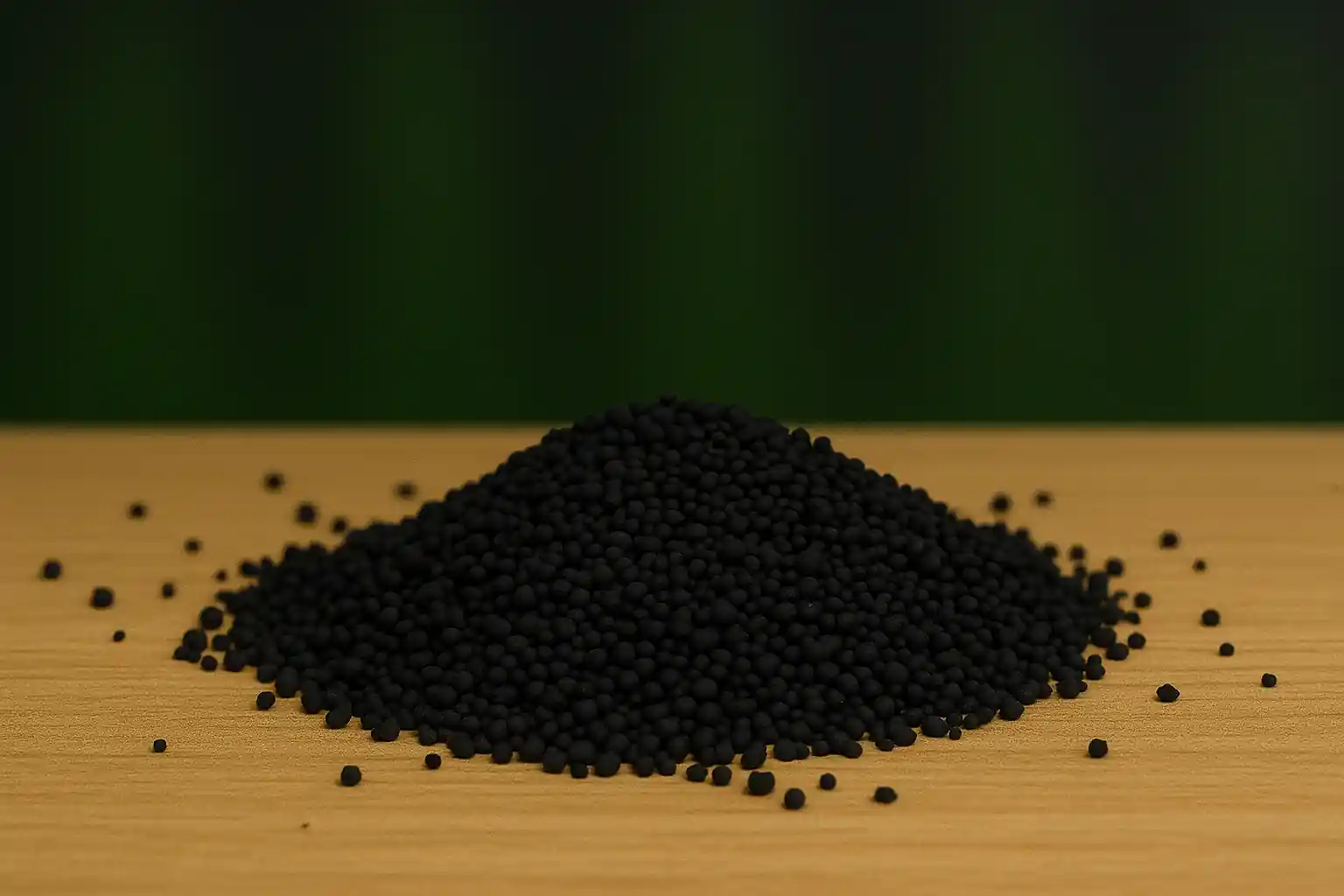
Aquarium Soil Guide: Choosing, Installing & Maintaining Nutrient-Rich Substrate
Introduction
Aquarium soil is more than just a decorative layer — it’s the foundation of a thriving planted aquarium. It provides nutrients, supports root development, buffers water parameters, and plays a crucial role in the long-term health of aquatic plants. Without the right soil, your aquascape may look stunning initially but fail to support sustained plant growth.
This guide walks you through everything you need to know about aquarium soil — from choosing the right type and setting it up correctly to long-term maintenance, planting tips, and troubleshooting.
What you’ll learn in this lesson
- What aquarium soil is and why it’s essential
- Types of soil: nutrient-rich, inert, mineral-based
- How to choose soil for your plants and fish
- Proper layering and installation techniques
- Transitioning from other substrates to soil
- How soil affects water chemistry
- Common issues like cloudiness or nutrient leaching
- How to plant, fertilize, and care for a soil-based aquarium
- Integration with CO₂ systems
- Sustainable and long-lasting soil choices
What Is Aquarium Soil?
Aquarium soil is a type of substrate formulated specifically for planted tanks. It’s not just a decorative layer — it actively contributes to plant nutrition and shapes the ecosystem’s balance.
Key Functions of Aquarium Soil
- Nutrient provider: Supplies essential macro and micronutrients to plant roots
- pH buffer: Slightly acidic soils can create optimal conditions for plant and shrimp species
- Root support: Fine granules support firm anchoring and strong root development
- Water chemistry stabilizer: Helps maintain consistent parameters
Aquarium Soil vs Other Substrates
| Feature | Aquarium Soil | Sand or Gravel |
|---|---|---|
| Nutrient content | High | Very low |
| pH control | Yes | No |
| Root penetration | Excellent | Needs root tabs |
| Cloudiness risk | Moderate initial bloom | Low |
| Maintenance | Medium | Low |
Soil is ideal if you’re building a planted tank or aquascape, while gravel and sand are better for simple community tanks with plastic plants or low-rooting flora.
Types of Aquarium Soil
Active Soil (Aqua Soil)
- Rich in nutrients
- Usually buffers pH toward the acidic side
- Ideal for CO₂-injected tanks
- Examples: ADA Amazonia, Tropica Soil, Fluval Stratum
Mineral-Based Soil
- Made with laterite or clay bases
- Improves structure and supports nutrient retention
- Offers slow nutrient release
- Often used with fertilizers for long-term use
Inert Soil
- Lacks nutrients
- Often used in minimalist or shrimp tanks
- Requires full external fertilization
DIY Soil Substrates
- Often made from garden topsoil, peat moss, or clay
- Cost-effective but difficult to balance
- Needs capping and testing for safety
💡 Tip: If using DIY soil, allow it to mature outside the tank first (fermentation phase).
Choosing the Right Soil for Your Setup
Based on Tank Type
- High-tech tanks: Active soil with high nutrient levels
- Low-tech tanks: Mineral or inert soil plus root tabs
- Shrimp tanks: pH-buffering soil with no copper content
Based on Plant Species
- Carpet plants like Monte Carlo or HC Cuba prefer fine-grain active soil
- Root feeders like Amazon Swords need deep, nutrient-rich base
- Epiphytes like Anubias or Bucephalandra do not require soil but still benefit from water column stability
Based on Fish Species
- Acid-loving species: Tetras, Discus, Rasboras
- Neutral pH species: Gouramis, Corydoras, Dwarf Cichlids
- Hardwater species: African Cichlids (better suited to gravel or crushed coral)
Installing Aquarium Soil Correctly
Rinsing or Not?
Most branded soils come pre-washed. Rinsing is not recommended unless the soil is extremely dusty, as you risk losing vital nutrients.
Layering Strategy
You can build a multi-layered base depending on your plant load and tank goals:
Two-layer system:
- Base layer: 3–5 cm of active or mineral soil
- Top layer: 2–3 cm of fine sand or decorative cap
Three-layer system:
- Lava rock granules or pumice for drainage
- Nutrient soil (ADA, Tropica, etc.)
- Sand or gravel cap for visual control and containment
📝 Pro tip: Use mesh or plastic grid between layers to reduce mixing over time.
Sloping and Depth Perception
Build your soil bed higher in the back and lower in the front for a strong sense of depth. Sloping also improves water circulation and plant viewing angles.
Planting Techniques and Fertilization
- Use long planting tweezers to embed roots firmly
- Avoid disturbing the substrate during water changes
- Root tabs can be added for heavy root feeders
- Liquid fertilizers complement active soils, especially in the long term
- Monitor plant growth and trim regularly to avoid nutrient imbalance
Soil and Water Chemistry
pH and Hardness Effects
Active soils typically lower pH and KH, creating a soft, acidic environment. This suits many tropical fish and plants but must be monitored with test kits.
Initial Ammonia Spikes
Some soils leach ammonia during the first few weeks. This is normal but requires:
- Frequent water changes (30–50% every few days)
- Strong filtration
- Monitoring ammonia, nitrite, and nitrate levels
Avoiding Cloudiness
- Fill the tank slowly using a plastic bag or bowl to diffuse flow
- Use mechanical filtration with fine media like floss
- Let water settle before introducing livestock
Transitioning from Gravel or Sand to Soil
- Replace substrate in sections over several weeks
- Remove livestock temporarily if replacing all at once
- Seed new soil with beneficial bacteria or old media
- Expect minor cloudiness and ammonia spikes during transition
Soil Maintenance Over Time
- Avoid vacuuming directly into the soil
- Siphon detritus from above the cap layer
- Top off with fresh soil or root tabs after 12–24 months
- Monitor nutrient depletion through plant health and test kits
Troubleshooting Common Soil Issues
Algae Blooms
Often caused by excess nutrients and light. Fix with:
- Increased plant mass
- Reduced lighting intensity or duration
- Balanced CO₂ and fertilization
Mixing Layers
If decorative sand mixes with the soil, reinforce layer borders with rocks or plant walls.
Soil Compaction
- Use shrimp or bottom dwellers to stir gently
- Aerate substrate with root tabs or plant removal
- Avoid overly deep soil beds
pH Instability
If your soil keeps acidifying the tank, try:
- Adding crushed coral to your filter
- Buffering with water conditioners
- Increasing KH with baking soda (carefully)
Budget vs Premium Brands
| Brand | Type | Price Range | Notable Features |
|---|---|---|---|
| ADA Aqua Soil Amazonia | Active | Premium | High nutrients, pH control |
| Tropica Soil | Active | Mid | Clean, beginner-friendly |
| Fluval Stratum | Mineral-based | Mid | Gentle buffering, good for shrimp |
| JBL Manado | Inert | Budget | Needs supplementation |
| Dennerle Scaper’s Soil | Active | Mid | Great for nano tanks |
Soil in CO₂ and High-Tech Tanks
- Active soils support explosive plant growth under CO₂ injection
- Consistent fertilization is essential to prevent imbalance
- Soil buffers pH downward, which enhances CO₂ solubility
- Combine with automated dosing systems for advanced results
Soil in Low-Tech and Shrimp Tanks
- Choose mild soils with no copper or chemicals
- Avoid nutrient spikes by pre-cycling soil
- Support biofilm growth on soil surface for shrimp feeding
- Combine with mosses and fine-leaf plants for natural shelter
Sustainable Soil Practices
- Choose brands using natural or organic ingredients
- Reuse old soil after sterilizing with boiling water
- Avoid chemically enhanced soils if keeping shrimp or snails
- Compost spent soil or use in plant pots (if chemical-free)
Quick Takeaways
- Aquarium soil is key for plant health and tank stability
- Match soil type to your plant load and tank parameters
- Use proper layering and sloping for long-term success
- Monitor chemistry closely in the first few weeks
- Maintain with care to avoid compaction and nutrient leaching
Conclusion
A healthy planted aquarium starts at the base — with quality aquarium soil. It feeds your plants, shapes your layout, and supports a thriving ecosystem. By choosing the right soil and installing it properly, you’re setting the stage for long-term aquascaping success.
Whether you’re creating a lush jungle, a minimalist Iwagumi, or a shrimp paradise, soil makes the difference. Make it count.
💬 Join the Conversation
Tag us on Instagram @AquariumLesson — we want to see your soil-based setups!
👉 What’s your go-to soil brand or custom mix?
FAQ
What soil is best for planted tanks?
Active soils like ADA Amazonia or Tropica Soil are ideal for CO₂ tanks. Mineral-based soils are better for low-tech setups.
How deep should aquarium soil be?
A depth of 3 to 5 centimeters is typically sufficient for most plants. Carpet plants may require less, large rooted plants more.
Can I reuse aquarium soil?
Yes, if sterilized and replenished with nutrients (e.g. root tabs). Avoid reusing if it has been contaminated with medication or algae.
Does aquarium soil lower pH?
Yes, most active soils slightly acidify the water. Monitor your pH regularly and adjust as needed.
Can I use soil in a tank without CO₂?
Yes, but choose soils with a milder nutrient profile and support with root tabs or liquid fertilizer.
References
- Substrate Guide – Tropica Aquarium Plants – Tropica
Explains the use of concentrated substrate layers under gravel or soil without affecting pH/KH, boosting plant health
https://tropica.com/en/plant-care/substrate/ - Complete Planted Aquarium Substrate Guide – 2Hr Aquarist
Detailed comparison of active aquasoils, including ADA Amazonia, highlighting nutrient content, ammonia spikes, porosity, and longevity
https://www.2hraquarist.com/blogs/substrates-overview/substrate-101 - Cycling Aquasoil Amazonia in Shrimp Tanks – The Shrimp Farm
Practical setup guide detailing ammonia spike management and pH buffering benefits of ADA Amazonia soil for sensitive invertebrates
https://www.theshrimpfarm.com/articles/cycling-aquasoil-amazonia.php - Foolproof Cycling Method for ADA Aquasoil – PlantedTank.net
Community-verified method explaining initial ammonia release and optimal cycling practices for ADA Amazonia
https://www.plantedtank.net/threads/foolproof-method-for-cycling-ada-aquasoil-amazonia.1147569/ - Tropica Aquarium Soil Product Info – GlassAqua
Provides professional insights on Tropica Soil’s buffering properties, optimal use, and high nutrient content without the need for a bottom layer
https://shop.glassaqua.com/products/tropica-aquarium-soil - Substrate (Aquarium) – Wikipedia
General overview of aquarium substrates, explaining roles, chemical interactions, plant suitability, and substrate thickness recommendations
https://en.wikipedia.org/wiki/Substrate_(aquarium)
Inspire someone – share this post
